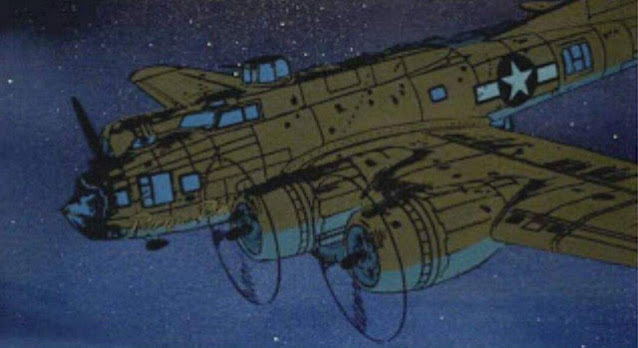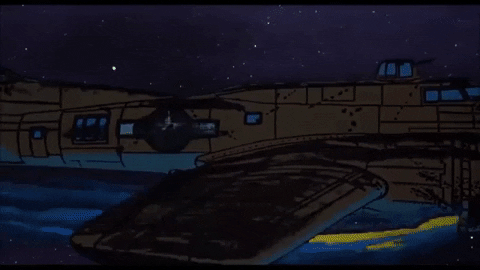The Galloping Ghost!
 |
| The USS Enterprise in 1939. |
The “Big E" USS Enterprise (CV-6) fleet carrier of World War II fame was the 7th US Navy boat/ship named the Enterprise. The first was a sloop captured by none other than Benedict Arnold on Lake Champlain during the Revolutionary War. Other USS Enterprises were US Navy men of war, including a wooden ship involved in the Barbary Wars. Other Enterprises were Privateers, simple patrol craft. All of these predecessors ultimately led to the "Big E."
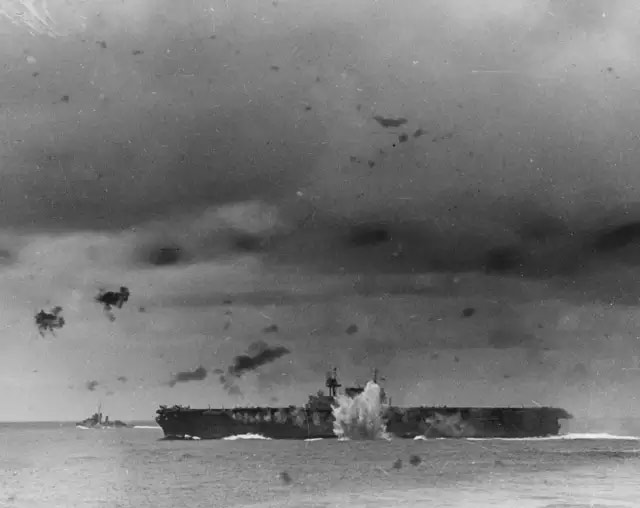 |
| USS Enterprise dodges bombs during the Battle of Santa Cruz, 26 October 1942. |
The Enterprise was a Yorktown-class aircraft carrier that formed the mainstay of US Naval operations in the Pacific right from the start of the US involvement in World War 2. A little-known fact is that Enterprise sent 18 Douglas SBD Dauntless dive bombers of her Air Group over Pearl Harbor during the 7 December 1941 attack from a position about 215 nautical miles (398 km) west of Oahu. While not in a position to intercept the Japanese carrier force to the north of Oahu (whose whereabouts, in any event, were unknown), Enterprise still did her part in the battle. Seven of her planes were shot down with eight airmen killed and two wounded. The tale of the "missing US carriers," thus, is a pure myth. The US carriers were almost back at Pearl Harbor after delivering planes to Wake Island and were nearby during the attack, always ready for action.
 |
| USS Enterprise barely escapes destruction at the Battle of Santa Cruz, 26 October 1942. |
USS Enterprise was credited with the first US Navy sinking of a full-sized Japanese ship during the war. This was the submarine I-70, sunk by Enterprise planes on 10 December 1941. Enterprise had an advantage over the Japanese because it carried the early RCA CXAM-1 radar and could spot the enemy electronically while the Japanese by and large relied on air patrols and lookouts.
 |
| Battle damage to Enterprise during the Battle of Santa Cruz. |
In April 1942, Enterprise embarked on her most famous operation. Admiral William "Bull" Halsey commanded Task Force 16 from aboard the Enterprise and led it on the daring Doolittle Raid of 18 April 1942. While USS Hornet actually launched the 16 B-25 bombers that carried out the raid, Enterprise's planes provided crucial air cover and sank two nosy Japanese patrol boats that could have exposed the operation before it even began. Enterprise and Hornet then escaped unscathed in one of the most pivotal and successful naval operations of the war. The raid demolished 112 buildings and damaged 53 more, killing 87 men, women, and children. There were 151 civilians seriously injured, one being a woman shot through the face and thigh while gathering shellfish near Nagoya. Another 311 Japanese suffered minor injuries.
 |
| A photo taken from the battleship Washington shows an explosion on Enterprise from a bomb-laden kamikaze. The ship's forward elevator was blown approximately 400 feet (120 m) into the air from the force of the explosion six decks below (U.S. Navy Naval History and Heritage Command Official U.S. Navy photo 80-G-323565). |
One operation alone, however, does not tell the full story. The Enterprise was crowned with glory during World War 2, accumulating 20 Battlestars overall (the most ever for a US Navy ship). Among other exploits, she and her planes were credited with shooting down 911 enemy planes, sinking 71 ships, and damaging 192 other ships.
 |
| Enterprise's massive elevator was destroyed by a Kamakazi. |
All of the glory came at a heavy cost. The Big E accumulated its share of war damage and at times barely escaped being sunk. Enterprise was heavily damaged by bombs twice in the Solomon Islands and in the battle of Santa Cruz. She was struck twice by Kamakazis, with one explosion blowing her 15-ton elevator hundreds of feet into the air.
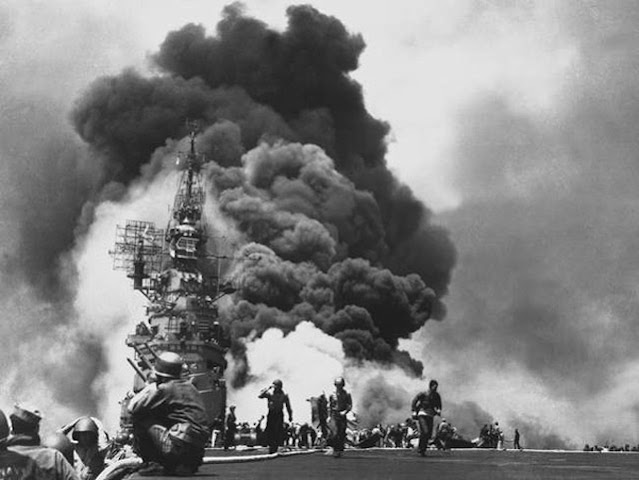 |
| A wall of flame rises over USS Enterprise during the Battle of Santa Cruz, 26 October 1942. |
Throughout the war, Enterprise was reported as having been sunk by the Japanese three times. She came so close to destruction without falling over the edge and came and went without detection that Admiral Bull Halsey nicknamed her “The Galloping Ghost” of the Oahu coast. While heavy cruiser USS Houston (CA-30) acquired the same nickname during its activities off the Java coast, Enterprise was the most renowned ship to use that nickname.
In 1943 the Big E returned to the States for a complete overhaul after the Essex class carriers began to arrive. The Enterprise later returned to the Pacific and was involved in the Okinawa campaign and attacks on the main Islands of Japan.
In 1943 the Big E returned to the States for a complete overhaul after the Essex class carriers began to arrive. The Enterprise later returned to the Pacific and was involved in the Okinawa campaign and attacks on the main Islands of Japan.
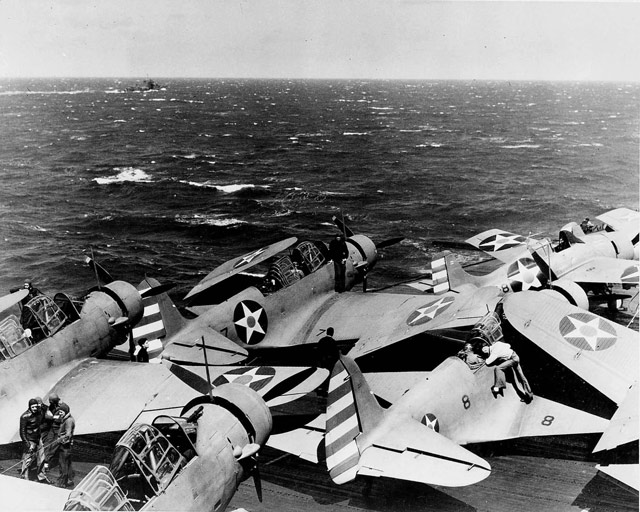 |
| TBD-1 of VT-6 on the flight deck of USS Enterprise during the Doolittle Raid operation, 11 April 11 1942. |
The End - and A Proud Heritage.
The USS Enterprise CV6 was one of only three original fleet carriers to survive the war. She was partially repaired for her late-war damage after entering the New York Naval Shipyard on 18 January 1946. Thereafter, was deactivated and decommissioned on 17 February 1947. After being mothballed until 1958, Enterprise was sold for $563k to the Lipsett Corporation of New York City for scrapping at Kearny, New Jersey. Instructions were that it was to be "scrapped only," so there was no possibility of revival. |
| The Galloping Ghost finally heading to the scrapyard in 1958. |
The "Galloping Ghost's" heritage continues long after its scrapping. The eighth Enterprise was the world's first nuclear-powered carrier and served honorably from November 1961 to 1 December 2012. The ninth Enterprise is currently under construction as of 2021.
2021

